Basic Information about Suspicious Files
Before starting to delete suspicious files, I’d like to briefly introduce you what is the suspicious file and what’s the influence it will make on your computer.
What Are Suspicious Files
Suspicious files always come from an untrusted or unknown origin. They usually come from unverified websites, unknown email attachments, or transferred from infected external devices. The suspicious files might skip the detection of your antivirus software and cause damage to your computer.
What Is the Impact of Suspicious Files on Computers
Since suspicious files might be a part of the malware, your computer might face danger if there is one or more. They might:
- Slow down the computer performance;
- Download suspicious software;
- Lock up important files;
- Delete or corrupt files;
- Etc.
Delete Suspicious Files Manually in Windows 10/11
Sometimes, you can find these suspicious files due to their abnormal names or file extensions, but then you will find that you are unable to delete suspicious files. You can try the following methods to delete these files.
Method 1: Delete Suspicious Files with Command Prompt
Step 1: Press Win + S and type Command Prompt into the search box.
Step 2: Choose Run as administrator in the right pane.
Step 3: You need to change the path to where the suspicious files locate. Type cd Path and hit Enter. For instance, if a suspicious file is found in the ss folder on the Desktop, I need to type cd C:\Users\bj\Desktop\ss and hit Enter to change the directory.
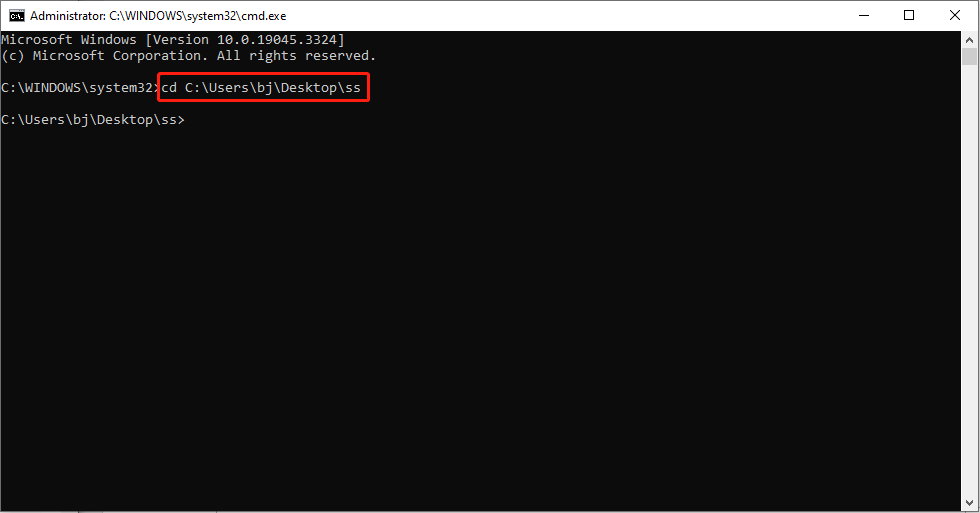
Step 4: Type dir and hit Enter to list all the files in this directory.
Step 5: Delete the suspicious file by typing del filename extension and hitting Enter. For example, I need to delete the Basic.pst file, thus input del Basic.pst, and hit Enter.
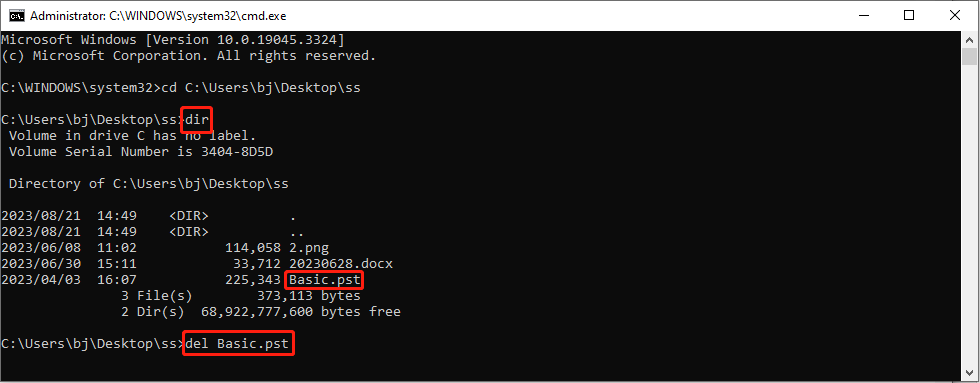
You can close the window and navigate to the location to check whether the file is deleted successfully.
If you have deleted your personal files by mistake in this way, you are unable to recover them through the Recycle Bin. You can seek help from MiniTool Power Data Recovery. This is a green and safe file recovery tool. All your files stored in the original device are safe when you use this software to recover deleted files.
Besides, this free file recovery software supports you to recover many types of files, including photos, documents, videos, archives, audio files, and so on. Try this ideal software if needed.
MiniTool Power Data Recovery FreeClick to Download100%Clean & Safe
Method 2: Delete Suspicious Files by Virus Scan
Step 1: Press Win + I to open Windows Settings.
Step 2: Navigate to Update & Security > Windows Security > Virus & threat protection.
Step 3: Choose Scan options > Full scan.
Step 4: Click on the Scan now button.
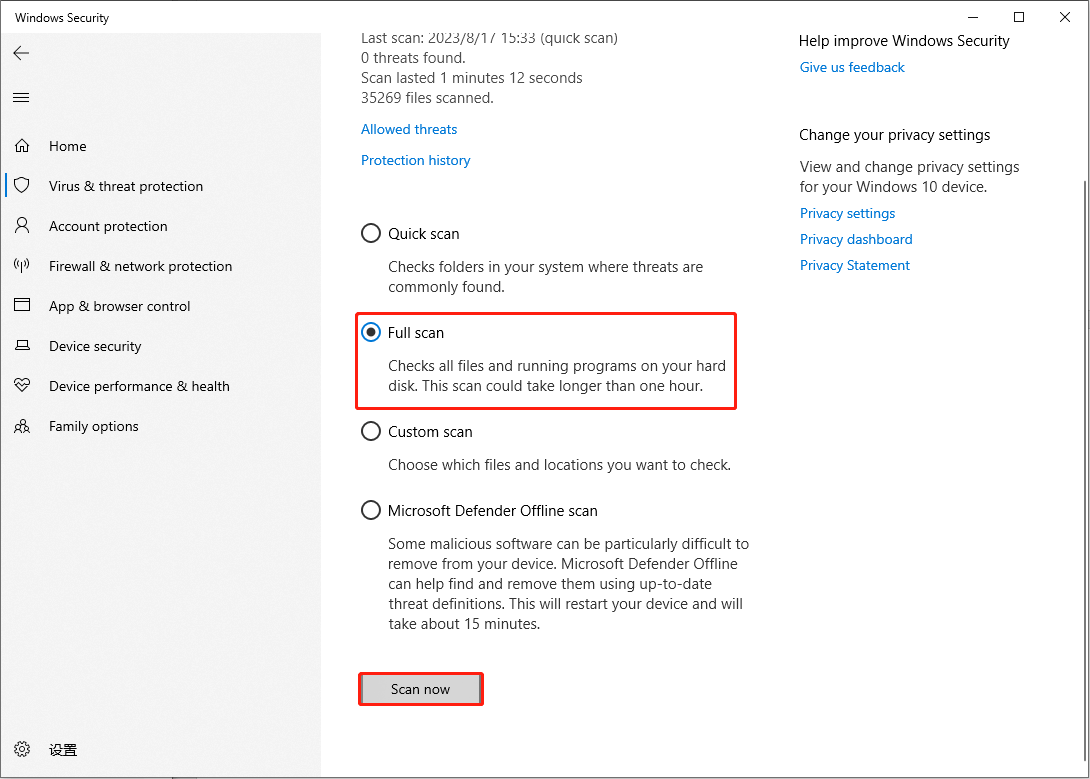
Please wait patiently until the process is finished. If Windows Security finds any suspicious file, it will ask you to Quarantine or Remove. Select Remove and press Yes to confirm the choice.
Method 3: Remove Suspicious Files by Taking Full Control
Unable to delete suspicious files may be because they are locked by malware to avoid removal. In this situation, you can take ownership of the suspicious file/folder to get rid of suspicious files.
Step 1: Locate the suspicious file/folder, then right-click on it to choose Properties from the context menu.
Step 2: Switch to the Security tab and choose Advanced in this window.
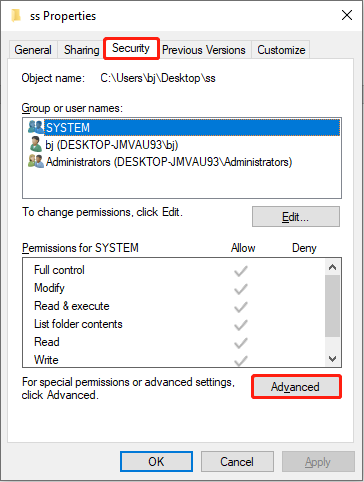
Step 3: Click on the Change button next to the current owner’s name.
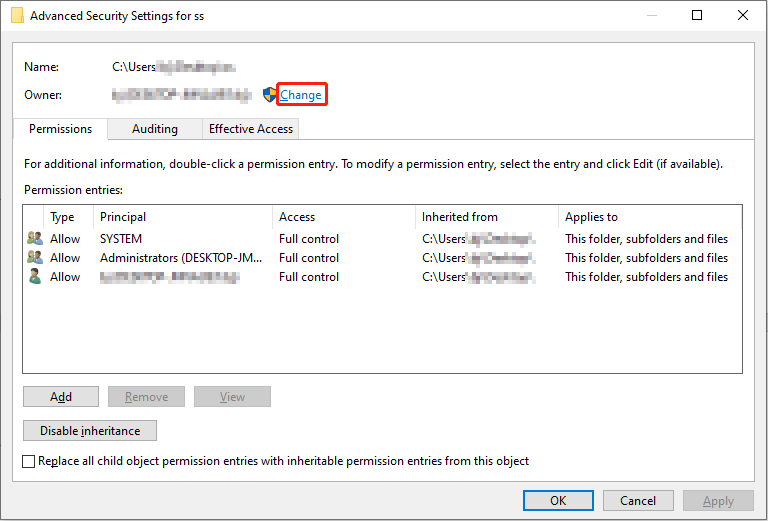
Step 4: You can type the name of your account in the Enter the object name to select section, after that click Check Names to confirm.
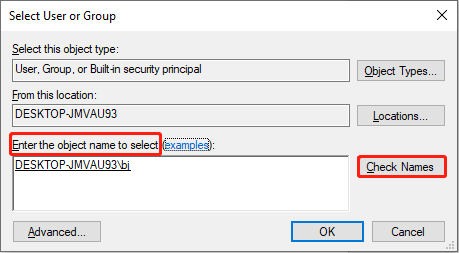
Step 5: After that, click OK to close the Select User or Group window.
Step 6: Select Add under the Permission sector.
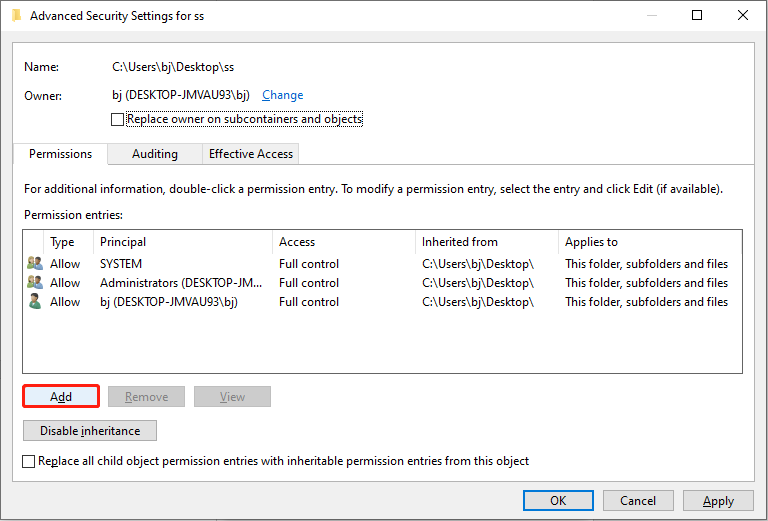
Step 7: In the following window, click on Select a principal to log into your account by inputting your account name and clicking Check Name. Click OK to close the window.
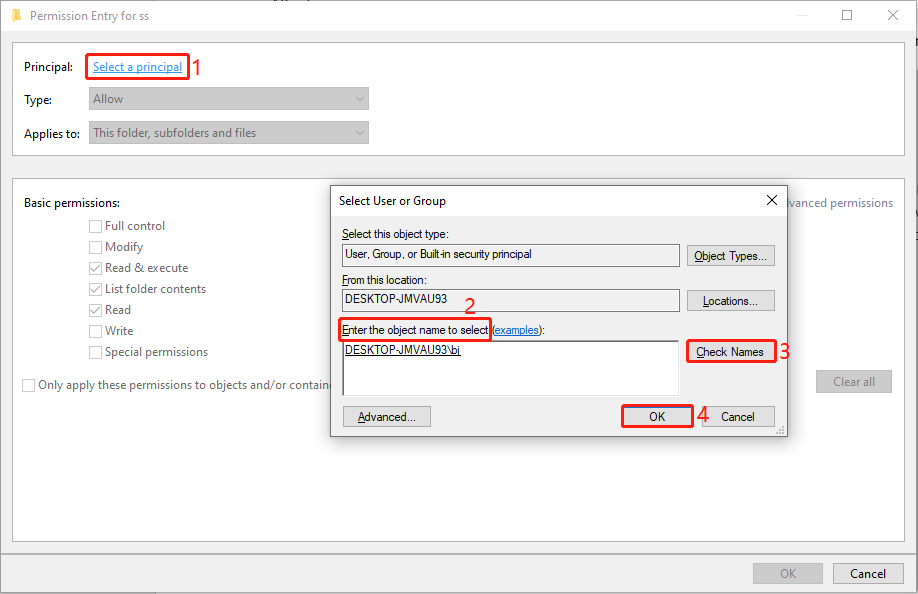
Step 8: Check Full control in the Basic permissions sector, then click OK to save the change.
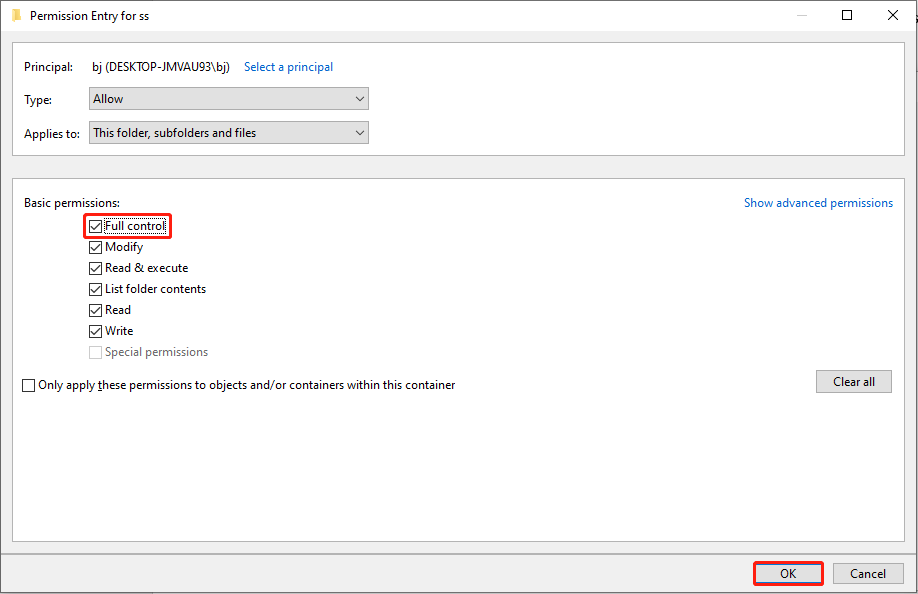
Step 9: Check Replace owner on subcontainers and objects, then click Apply and OK.
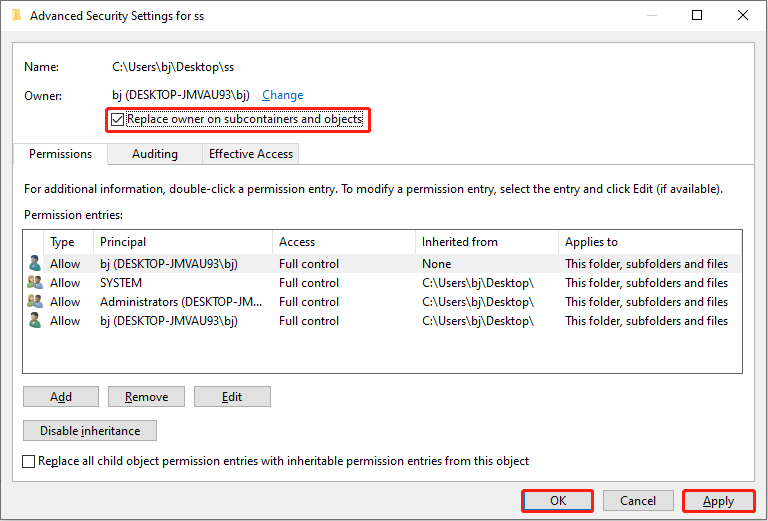
When all the settings are completed, you can try to delete suspicious files in Windows 10/11.
Method 4: Remove Suspicious Files in Safe Mode
Step 1: Click on the Start icon and choose the Power button.
Step 2: Press and hold the Shift key and click on the Restart choice.
Step 3: Select Troubleshoot > Advanced options > Startup Settings.
Step 4: Click Restart, then press the accordingly key to enter Safe Mode.
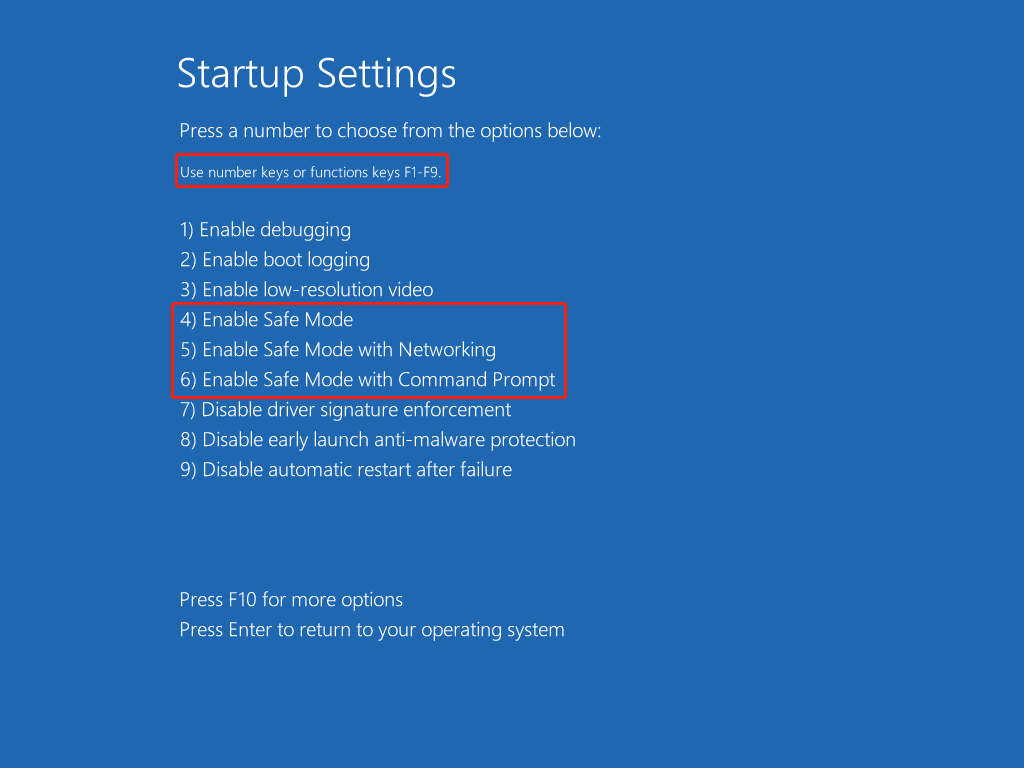
Step 5: In Safe Mode, you can go to the location of the suspicious file and delete it.
After that, you can get out of Safe Mode.
Method 5: Reinstall Windows System
If all the above methods do not rectify your problem, try reinstall the Windows system. This operation can help you clear some strong viruses or fix computer errors. You can read the post to finish the reinstallation.
Bottom Line
In most cases, you might find you are unable to delete suspicious files by simply right-clicking on them and choosing Delete. This post shows you five methods to remove suspicious files effectively in Windows 10/11. Please be careful when you delete methods in these ways. If your important files are deleted, recover them as quickly as possible with MiniTool Power Data Recovery.
MiniTool Power Data Recovery FreeClick to Download100%Clean & Safe
Welcome to share your problems with MiniTool software via [email protected].
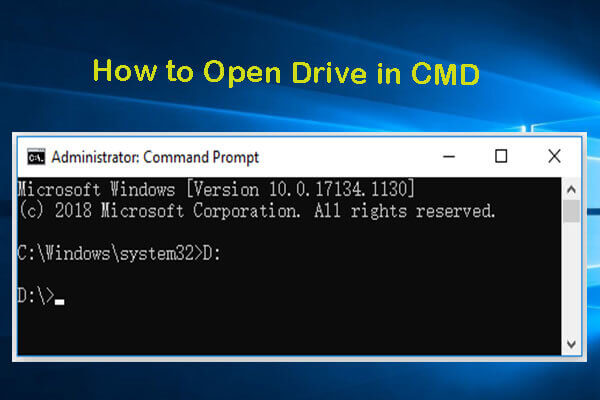
User Comments :